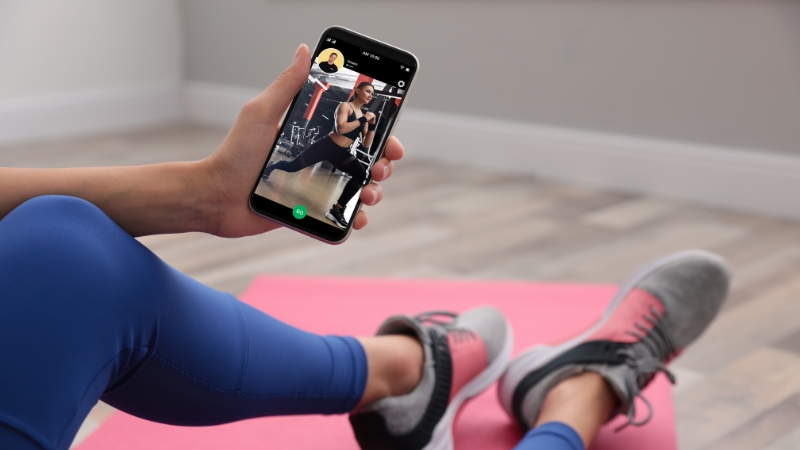
Share Post:
Stuck on the couch once again with an ice pack strapped to a body part that used to cooperate? Feels pretty bad, doesn’t it? There’s nothing quite like being forced into inactivity and pondering every life choice that led to a twisted ankle or torn ligament.
More than a few people have discovered that the discomfort is not limited to muscles and bones. A mental rollercoaster often tags along, taking daily existence from motivational highs to mopey lows faster than a barbell crashing to the floor.
Let’s keep it real: a lot of people refuse to talk about the psychological mess behind recovery, yet it’s there, practically screaming, “Hey, remember when you could stand up without wincing?”
It’s all good, though—today, I’ll highlight a few tactics for surviving the recovery ordeal without losing your sanity.
Key Methods for Staying Mentally Strong
The question is, how does one outsmart those negative thoughts? The mind loves to concoct stories of doom and gloom: “Maybe I’ll never get back to full speed” or “What if my greatest achievements are in the rearview mirror?” Let’s examine ways to prove that pesky brain chatter wrong.
Table of Contents
Toggle1. Setting Clear, Realistic Goals
Heard about setting SMART goals? Athletes talk about them all the time, but they work wonders for anyone dealing with an injury. Pick targets that are specific, measurable, attainable, relevant, and time-bound.
For instance, aim for a certain range of motion by a particular date, or try completing a slow, controlled squat with proper form two weeks from now.
The act of planning achievable milestones injects purpose into daily routines. Progress feels more tangible when you can check items off a list and say, “Yes, I did that.”
The trick is to avoid going overboard. Shooting for outlandish objectives—like returning to sprinting speed after a month off from a complex fracture—causes frustration and sets the stage for mental collapse. Small steps are better than gigantic leaps that land you back in the therapist’s office.
2. Guided Imagery and Mental Rehearsal

A couch might be the new best friend, but the mind can still roam freely. Visualizing success is no joke: imagination can mimic the impact of real training by firing similar neural pathways.
Think about completing a perfect tennis serve or making a flawless jump shot. Yes, it sounds a bit too warm and fuzzy for some folks.
Still, there is legitimate science behind the technique. Brain scans reveal that mentally rehearsing an activity can keep the connection between mind and muscle alive, generating confidence.
The only caveat? Don’t overdo it by envisioning a triumphant Olympic podium moment tomorrow if you’re still hobbling around in a boot.
Keep the imagery grounded in realistic scenarios, so the mind remains positive but not delusional.
3. Seeking Professional Help When Necessary

Mental battles can go beyond everyday stress. Depression, anxiety, or trauma sometimes demand professional intervention. Therapists, counselors, and sports psychologists specialize in guiding individuals through the emotional landmines of recovery.
At times, professional assistance is vital; for example, legal services at Trapani Law can help manage legal concerns during the healing process.
Cognitive-behavioral therapy, on the other hand, helps reframe negative thoughts into something more constructive. No shame in that.
Seeking qualified support might prevent months of emotional turmoil and accelerate the mental side of healing. While some folks prefer self-help routes, others thrive with a counselor’s guidance. Each person’s journey is different. It’s about finding an approach that fits personal needs.
4. Leaning on Others
Nobody likes to appear weak. Let’s admit, it’s tempting to be the stoic warrior who never asks for help. But friends, family, teammates, or support groups can offer that small spark of hope on days when motivation is nowhere to be found.
Sharing rehab victories and stumbles with folks who’ve endured similar challenges can be strangely comforting.
Yes, it might be embarrassing to have your spouse carry the grocery bags when you used to out-lift them by a mile. Swallow a bit of pride.
Accept that help graciously. People enjoy feeling useful. And if it comes with a side of teasing about your new “grandpa” gait, dish it back with some witty banter.
5. Keeping a Positive Outlook… as Much as Possible
Anyone who has battled an injury knows how easy it is to sink into negative thoughts. By day three of forced rest, cynicism can become the main dish for breakfast. A conscious effort to maintain positivity is key.
For example, try repeating a personal mantra: “My body recovers a little more each day.” Another popular method involves noticing and celebrating even the tiniest victory—like regaining half an inch of mobility or feeling slightly less pain in the morning.
Sarcasm can be a powerful ally. Laugh at the absurdity of hobbling around the house or turning basic tasks into Herculean labor.
It’s okay to occasionally respond with, “I’m having a fantastic day, can’t you tell?” when asked how you’re feeling. Channel that energy into fueling hope, which is crucial for healing from the inside out.
6. Focusing on the Present Moment
Much of the anxiety around injuries stems from projecting months into the future. Will it take forever to recover? Is a dreaded plateau lurking on the horizon? Panic sets in.
That’s where staying in the present can provide relief. Mindfulness—meditation, deep breathing, or simply pausing to notice how the body feels right now—helps quiet the mental tornado.
A brief deep-breathing session can ground the mind. Inhale, hold for a moment, exhale. Repeat a few times. The idea is to exist in one single moment without catastrophic forecasts about an uncertain tomorrow.
Sounds suspiciously cheesy, but ask anyone who’s tried it: it works well enough to reduce the daily freak-out by a few decibels.
7. Giving Emotions a Chance to Breathe

Ever tried pretending that anger or sadness doesn’t exist? It usually makes those feelings come back with a vengeance. Recovery isn’t all rainbows and unicorns. Sometimes it’s downright irritating.
Acknowledge those emotional waves. Talk them out with someone who listens. Or journal about it, letting raw feelings spill onto a page. Bottling everything up leads to more tension, and tension often worsens pain perception.
Crying isn’t forbidden, either. A short meltdown can release the emotional buildup that’s been piling up. It’s part of being human.
Even the tough-lifter persona can use a good cry once in a while (just maybe not in the middle of the gym, unless that’s your style—no judgment here).
8. Maintaining Routine and Structure
After an injury, a day can feel painfully long, especially if each hour is spent dwelling on discomfort. Creating a schedule can bring back a sense of order.
Add therapy appointments, set times for rest, plan healthy meals, and include small social or leisure activities. A framework for the day ensures that the mind has less time to spiral into negativity.
For fitness enthusiasts, a reworked training schedule that accommodates injury constraints can be oddly motivating. A scaled-back plan is still a plan.
Maybe it revolves around minimal impact exercises, upper-body work if the lower body is injured, or mental skills practice. Having a system re-establishes a semblance of normalcy and gives the day direction.
9. Staying Connected to Your Sport or Activity
Abruptly cutting ties with a sport or physical activity can feel like losing part of one’s soul. Athletes are often told to “rest completely,” but there are ways to remain plugged in without aggravating the injury.
Sitting on the sidelines, attending team meetings, analyzing game footage, or mentoring a younger athlete can help preserve that sense of belonging.
It may not compare to the adrenaline rush of actual competition, but it beats total disengagement. Plus, watching a game or practice from a different vantage point might reveal new insights.
Teammates also appreciate moral support, and that camaraderie can fuel personal motivation to heal and come back stronger.
10. Patience and Self-Compassion

The first instinct might be to blame oneself for not healing faster or to compare personal progress with someone else’s miraculous comeback. Don’t do it.
Patience is vital, even though it’s probably the least enjoyable virtue for an injured athlete. Each body heals at its own pace, and random setbacks happen.
Self-compassion is equally critical. Resist the urge to rant about perceived failures. Instead, treat small milestones like mini-victories. Can you walk an extra hundred yards without sharp pain? That’s worth celebrating.
Learned a brand-new prehab exercise that might prevent future injuries? High-five yourself for being proactive.
Self-kindness fuels resilience, and resilience is exactly what gets athletes to the finish line—eventually.
Parting Thoughts
Healing bones, muscles, and tendons is a monumental task. The mind, however, can be even trickier to soothe. A thoughtful blend of practical goal-setting, mindful focus on the present, self-compassion, and a supportive network can make a world of difference.
Recovery might feel never-ending at times, but minor wins add up. Overcoming obstacles demands patience, and there’s nothing wrong with a sarcastic quip or two along the way.
Personal growth often sneaks in when least expected. An extended rehab phase can spark deeper mental strength and renewed purpose. Keep that chin up.
A day will come when the only reminder of past injuries is a scar, a cautionary tale, and perhaps a smug little grin that says, “I made it through.” Then it’s on to the next challenge—because life rarely runs out of those, does it?
Related Posts:
- Should You Work Out While Pregnant? Here’s What Experts Say
- Can a Workout Routine Really Help With Mental and…
- Cardio vs. Yoga - Which is Better for Mental Health…
- Athlete’s Guide to Pain Tolerance and Injury Recovery
- How to Stay Active and Strong in 60s Without Overdoing It
- Fitness and Food Over 70 - How to Help Loved Ones…










